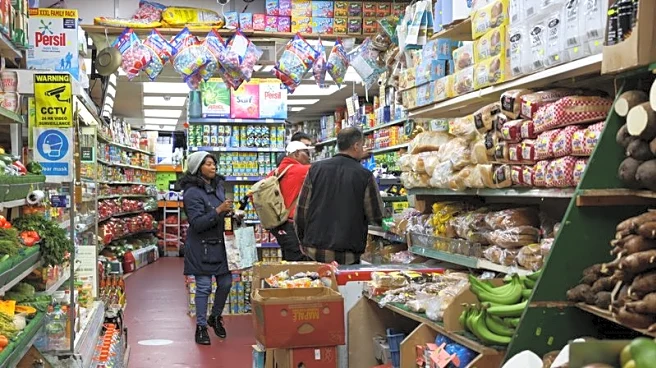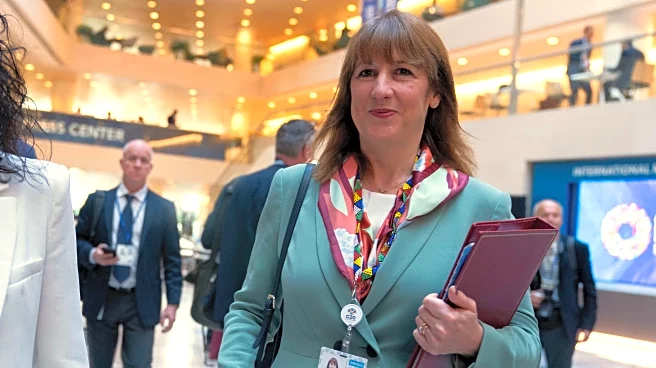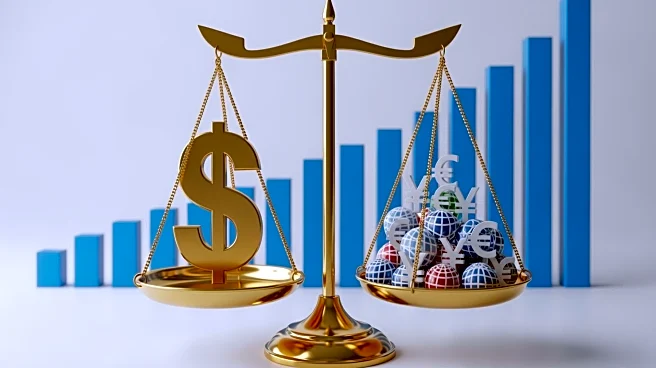What's Happening?
The UK has experienced a slight decrease in core inflation, which fell to 3.5% in September from 3.6% in August, according to the Office for National Statistics (ONS). This marks the first time since March
2025 that the annual rate has slowed. The overall Consumer Price Index (CPI) remained steady at 3.8%, significantly above the Bank of England's target of 2%. Despite the high inflation rate, the decrease in core inflation, which excludes volatile items like food and energy, is seen as a positive development. Food and non-alcoholic beverage prices fell by 0.2% in September, a notable change from a 0.4% increase a year ago.
Why It's Important?
The slight decrease in core inflation is significant as it suggests a potential easing of underlying price pressures in the UK economy. This development could provide some relief to consumers and policymakers who have been grappling with high inflation rates. While the overall inflation remains above the target, the reduction in core inflation may signal a turning point, potentially influencing future monetary policy decisions by the Bank of England. The continued high cost of food and transport, however, indicates that consumers are still facing financial strain, which could impact consumer spending and economic growth.
What's Next?
If the trend of decreasing core inflation continues, it may lead to adjustments in monetary policy by the Bank of England, potentially affecting interest rates. Policymakers will likely monitor upcoming inflation data closely to determine if this is a sustained trend. The impact on consumer confidence and spending will also be crucial, as these factors play a significant role in economic recovery. Businesses and consumers alike will be watching for further signs of inflation stabilization, which could influence investment and spending decisions.
Beyond the Headlines
The decrease in core inflation could have broader implications for the UK economy, including potential shifts in consumer behavior and business investment. If inflation pressures ease, it may lead to increased consumer confidence and spending, which are vital for economic growth. Additionally, businesses may find it easier to plan and invest with more predictable cost structures. However, the ongoing high costs in essential areas like food and transport suggest that economic challenges remain, and any recovery may be uneven across different sectors.













